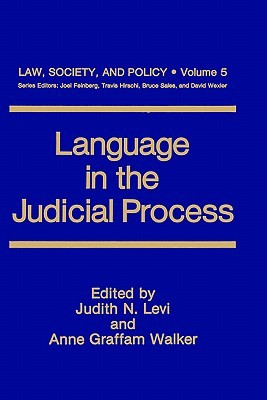
- We will send in 10–14 business days.
- Publisher: Springer
- ISBN-10: 0306435519
- ISBN-13: 9780306435515
- Format: 15.9 x 23.2 x 3.3 cm, hardcover
- Language: English
- SAVE -10% with code: EXTRA
Language in the Judicial Process (e-book) (used book) | bookbook.eu
Reviews
Description
Legal realism is a powerful jurisprudential tradition which urges attention to sodal conditions and predicts their influence in the legal process. The rela- tively recent sodal sdence in the law phenomenon, in which sodal research is increasingly relied on to dedde court cases is a direct result of realistic jurisprudence, which accords much significance in law to empirical reports about sodal behavior. The empirical research used by courts has not, how- ever, commonly dealt with language as an influential variable. This volume of essays, coedited by Judith N. Levi and Anne Graffam Walker, will likely change that situation. Language in the Judicial Process is a superb collection of original work which fits weIl into the realist tradition, and by focusing on language as a key variable, it establishes a new and provocative perspective on the legal process. The perspective it offers, and the data it presents, make this volume a valuable source of information both for judges and lawyers, who may be chiefly concemed with practice, and for legal scholars and sodal sdentists who do basic research about law.
EXTRA 10 % discount with code: EXTRA
The promotion ends in 13d.19:48:41
The discount code is valid when purchasing from 10 €. Discounts do not stack.
- Publisher: Springer
- ISBN-10: 0306435519
- ISBN-13: 9780306435515
- Format: 15.9 x 23.2 x 3.3 cm, hardcover
- Language: English English
Legal realism is a powerful jurisprudential tradition which urges attention to sodal conditions and predicts their influence in the legal process. The rela- tively recent sodal sdence in the law phenomenon, in which sodal research is increasingly relied on to dedde court cases is a direct result of realistic jurisprudence, which accords much significance in law to empirical reports about sodal behavior. The empirical research used by courts has not, how- ever, commonly dealt with language as an influential variable. This volume of essays, coedited by Judith N. Levi and Anne Graffam Walker, will likely change that situation. Language in the Judicial Process is a superb collection of original work which fits weIl into the realist tradition, and by focusing on language as a key variable, it establishes a new and provocative perspective on the legal process. The perspective it offers, and the data it presents, make this volume a valuable source of information both for judges and lawyers, who may be chiefly concemed with practice, and for legal scholars and sodal sdentists who do basic research about law.


Reviews